I finally decided to pull the trigger on building a CNC Router. CNC stands for Computer Numerical Control, or basically a computer operated router. I’ve been wanting to do this project for a while and it finally got to the point where I thought it would be a good idea as I’ve been wanting to have the capability to make parts that are usable. I’ve looked at things like RepRap devices and similar rapid prototyping systems but they weren’t really what I wanted. I want to machine harder materials and have a lot of flexibility. One nice thing is that if I build the router table I can also have it double as a RepRap if I decide to play with that. This post will just consist of multiple parts until I get the thing built. It could have also been named ‘How to spend your tax refund’ but that’s not as positive a way to look at it.
I’m currently in the parts acquisition and design stage of my router. I’m approaching the design from various angles to meet all of my goals. I would like to be able to machine wood and plastics and aluminum would be a bonus. One of my primary goals has been to reinforce the router as much as possible to keep it very rigid and hopefully achieve that goal. I’ve spent a lot of time over at the CNC Zone forums looking at other peoples designs, and researching. Some of the CNC machine build logs are great because you can see the evolution of a persons design over time and the final product and decisions. There’s a lot involved in putting a CNC Router together and it’s great to have resources and see other peoples alterations of their projects on the fly based on new information the received.
My friend Ollie has also been helping me out quite a bit with recommendations, experience and finding the right parts I need for what I want to achieve. Even with his great help there have been a lot of headaches involved in trying to find the right parts. Many of the components which go into making CNC equipment are not cheap at all and something that doesn’t look like it would cost a lot, does. If you have 2-3 years to build a CNC Router as a side project there is no doubt you can find some really good deals but if you are looking to build one in ‘the next few months’ then you don’t have as many options.
The first thing I had to do before building my CNC Router is devise a good plan. As you look at the pictures below and in future posts keep in mind that this is an evolving project and the design is going to change multiple times as I design and redesign what I need and also try to fit it into my budget. This first set of pictures was my ‘thrown together’ rendering of the basic concept that I wanted to go towards. My plan was to use extruded aluminum from 80/20 with a large amount of re-enforcement via gussets and directly bolting extrusions together through their ends and having plenty of cross bracing as well to reduce flexing as much as possible. The drawings below are using the 15 sized 80/20 extrusions. Those are 1.5 inches wide, and also come in many variations based on the 1.5 inch dimension. 1.5×1.5, 1.5×3, 1.5×6, 3×3, etc. Aluminum extrusions are also very easy to cut on a table or miter saw with a high tooth count carbide blade, so you don’t need any special tools to re-size it to your needs.
It’s pretty nice that 80/20 provides drawings of all of their extrusions and accessories online which makes them very easy to import into your 3D design program. You can find these drawings at 3D Content Central in various formats for AutoCAD, Solidworks, 3D Studio, etc. You do have to create an account to download the drawings and models, but they’re free and the account is very easy to setup.
In the first renderings below my original plan was to use independent V-Rail stock with V-Bearings for the linear rails. These engineered solutions are not cheap though once you consider all the bearings and the quantity of V-rail you need to support the system and retain rigidity. The first rendition was to use v-rail segments purchases from Grainger Industries or another supplier but I found it was almost as expensive as surplus ball bearing rails. I had also looked at PBC Linear’s IVT (Integral V Technology) which could be mounted up to 802/20, Bosch Rexroth and other brands of aluminum extrusion and they also offer v-rails integrated with aluminum extrusions as a single piece which are VERY cool. If you’re thinking of going with v-rails I would check them out but make sure to compare to the cost of higher quality and higher precision linear rails before diving in.
I later found a source for obsolete but very nice NSK linear rails with high precision, and they actually cost a lot less than buying all the V rail and V bearings I would have needed for this project.
NOTE: Click on any picture to see a much larger version of it.
The design has a moving Gantry (over head piece) which would slide back and forth along the table’s Y-Axis. I continued with this approach for a while and continued to update the renderings. After a bit I came up with the following design which does not have any legs attached yet, but includes a lot more details and specifics of the design that I wanted to include. I added the ball screw to the Y-axis, the linear rails and the carriage and linear rails for the Z (up/down) axis which the router motor will attach to. I also added more structural plates and bolts to the drawing.
You can see in the renderings below that I have replace the V-rails and V-Bearings with the NSK slides. This has a much cleaner look overall.
ABOVE: You can see the ball screw and NSK linear rails under the table, but without the legs it’s hard to tell the concept. At this point in the design stage I had planned to support the table and move the gantry back and forth. The bearing blocks (under the left and right side of the table) are good quality and can be run and loaded at any direction so this was not a big deal to me to hang the gantry off of them from underneath. If had used linear bearings which should only be loaded from the tops or sides then I would have had to put them on the sides or top of the table to support the Gantry.
ABOVE: You can also see the heavy reinforcement plates for the above section. The purpose is to remove torsional flex and bending from the X-axis on the gantry. Even small flex and movement in your framing structure transfers into the item you are trying to route or machine. The higher your load, as with heavy materials such as aluminum, the more flex and torsion/twisting forces you will apply to the frame.
I liked how the design above was going so I decided to add in the legs and base support as this is not a tabletop design at the time. In the renderings below you can see the CNC Router with the legs. All of the materials are fractional 80/20 types. For an example of the scale of this machine the Horizontal beam on the gantry with the 2 massive bolt plates is only 37.5 inches wide and the Gantry is about 40.5 wide overall. This gave me about 36 inches of usable cutting width on the Y axis table.
In the next set of renderings you can see the router assembly with the reinforced legs and upright supports. In reality for this kind of system I probably would have used double the leg cross and angular braces for even more rigidity and as a bonus gained an second shelving area underneath the router for the electronics, computer and parts.
I thought this looked pretty good with the legs attached and was feeling pretty good about the drawings so I decided to start pricing out the construction and the 80/20 materials. This is where I got totally shocked. I knew that extrusion wasn’t ‘cheap’ by any sense of the word. But to buy the extrusion I needed for the above design and all of the reinforcement plates, bolts and everything else was going to cost me a small fortune. You can see the prices in the spreadsheet below. This pricing is from the 80/20 eBay Auctions and Sales of the surplus and used components. Note that the pricing for the feet and feet brackets is not accurate, the feet actually cost $25 each(!). These prices don’t even include shipping.
Well this was a bit of a downer for me as I had REALLY wanted to build this whole thing with the 80/20 framing system, but there’s just no way I can justify that kind of expense right now and it would put my project completion out to one of those 1 or 2 year long projects. I started looking for other options on eBay. While I could only find a few pieces of used 80/20 rail being sold on eBay I did find a guy who was selling Bosch Hexroth aluminum extrusion at a fairly good price. It is used but I was able to find 10 pieces of the Bosch 45mm x 90mm extrusion 46″ long for $199 + shipping ($103) For the material itself this works out to about to about $0.43 an inch vs $0.93 an inch for the 80/20 stuff. You can buy the mounting brackets, t-nuts and other things off of Bosch Hexroth or you can find them on eBay. Granted this is also used material and may not be in as prime a condition as the 80/20 which is mostly surplus stock.
I decided that it was worth at least using some of the cheaper materials where I could. Bosch doesn’t have as many connecting plate, corner gusset and accessory options as 80/20 does, but there’s enough to make rigid structures and with some raw aluminum plates you can easily make your own plates if you have a drill press.
Around this point after looking at Ollies own router a little more I decided that I really liked the idea of a stationary gantry with a moving table. Instead of having to move a 50-75 pound gantry across the Y table you would only have to move the table itself plus the wait of your material under the gantry. The disadvantage to this is that it requires more room, but other than that it’s not a huge deal. I started to redesign the Y axis table with this in mind and using the Bosch materials in mind as well. In the rendering below you can see the new design for the Y table. It’s much thinner and 36 inches long and 24 inches wide. It’s Bosch structural material underneath with thin 80/20 t material on top.
I will probably find another surface solution but for now it’s good enough to represent a point. For an actual 24×36 t-plate the cost would be close to $450 in materials plus the shipping on top of that. That material is from Techno-Isel / Techno Inc. and is $195 for a 30mm high x 250mm wide x 1000mm long which is also out of budget, but looks really nice as you can see from the specifications below. It might make a good upgrade at some point.
One other option I found on the CNCZone forums is to use Slatwall MX from Diamond Life Gear. It’s an engineered t-slot product so it won’t be as sturdy as a solid aluminum or steel table top but it should perform pretty good. You can buy insert tracks which slide into the Slatwall MX slots and strengthen them and it’s a pretty low cost product as well.
Well, this is all well and good, things are moving forward with the design and I think I’m progressing in a positive way, but it’s still all vaporware and dreaming, right? Nope! Actually I’ve already received the motion control system and stepper motors, have the rails ordered , have the licensed Mach 3 software required to run the router and have some aluminum on the way. I am moving forward with this and I will add a second post later this evening or tomorrow morning. Once it’s up you’ll see a link just below this paragraph leading to the next page/part.
Part 1|Next: CNC System Components
Search CNC Posts

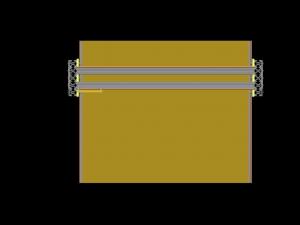
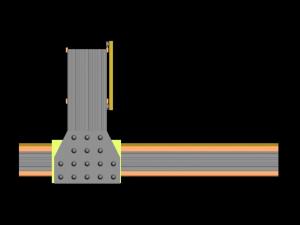
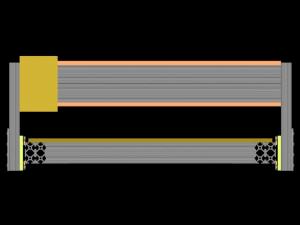
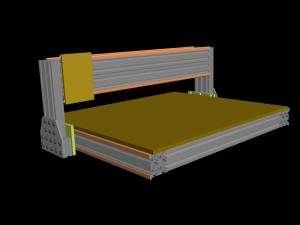
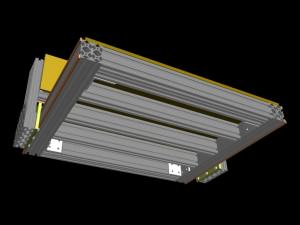
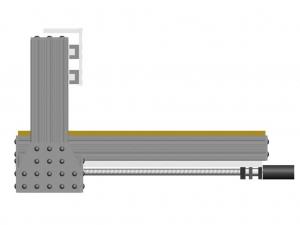
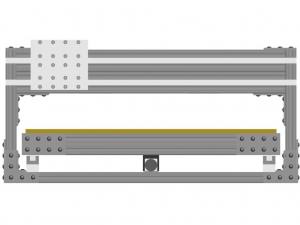
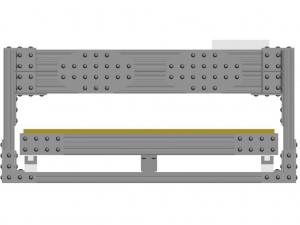
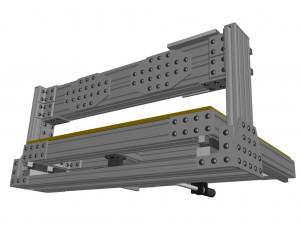
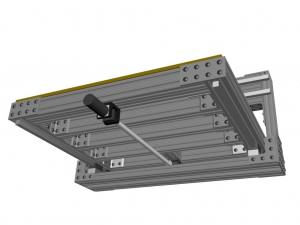
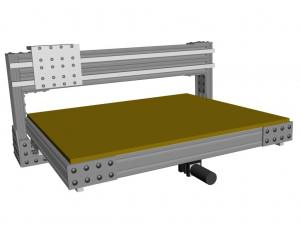
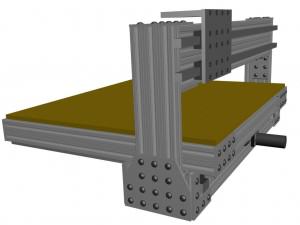
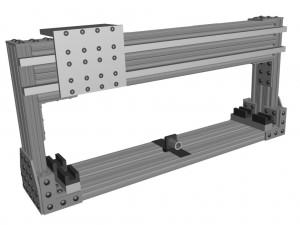
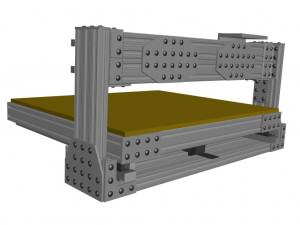
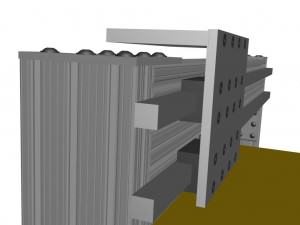
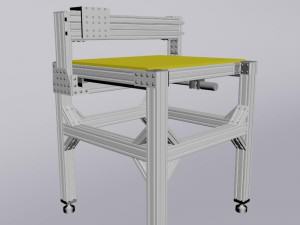
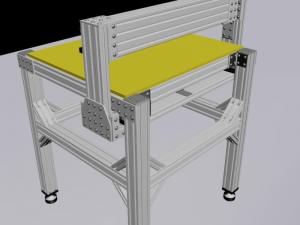
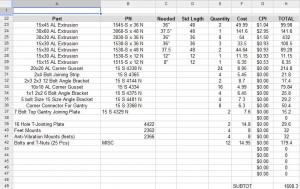
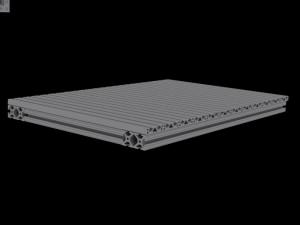
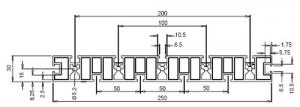
2 responses to Part 1: First DIY CNC Project – DIY CNC Router
Is it still a plan only or did you make a real one?
First DIY CNC Project : DIY CNC Router Part 1 | Jon's Hobbies http://ht.ly/1bDkff
Leave a reply to Part 1: First DIY CNC Project – DIY CNC Router